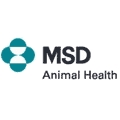 PORCILIS® PRRS, a field-proven, modified-live vaccine for immunizing pigs against porcine reproductive and respiratory syndrome (PRRS) virus, will be introduced this month by MSD Animal Health in the Philippines, Thailand, Vietnam and Malaysia.
PORCILIS® PRRS, a field-proven, modified-live vaccine for immunizing pigs against porcine reproductive and respiratory syndrome (PRRS) virus, will be introduced this month by MSD Animal Health in the Philippines, Thailand, Vietnam and Malaysia.
The vaccine has been successfully used throughout Europe for over a decade. It should help pig producers to control PRRS, a significant health problem in major pig-producing regions throughout the world, including Asia, where serious PRRS outbreaks have occurred.

PRRS results in substantial economic losses for produces and higher pork prices for consumers. It causes reproductive failure in sows, including infertility, abortions, stillbirths and weak piglets. In growers and finishers, PRRS causes poor performance due to respiratory distress, lethargy and failure to thrive. Pigs with PRRS are also more susceptible to secondary infections, which escalate economic losses.
In finishing pigs vaccinated with PORCILIS PRRS, field trials have demonstrated significant improvement in performance, including reduced morbidity due to PRRS and improved daily growth and feed conversion. In breeding pigs, use of the vaccine has resulted in significant improvement in reproductive performance on farms contaminated with the PRRS virus and it reduces transmission of the virus to piglets via the placenta. The duration of immunity with PORCILIS PRRS is at least 24 weeks.
Reduces viral shed
PORCILIS PRRS is based on a European PRRS strain and is intended for use in clinically health pigs living in a PRRS-contaminated environment. It has been the top-selling PRRS vaccine in Europe for the past 12 years. The vaccine’s recent approvals in three Asia Pacific countries were obtained following a rigorous review of the vaccine’s efficacy and safety by local regulatory authorities.
A published study* conducted by Paolo Martelli, DVM, of the University of Parma (Italy), demonstrated that compared to controls, PORCILIS PRRS provided a “statistically significant reduction in clinical signs in terms of incidence, duration and severity and by a more efficient cell-mediated immune response” in pigs that had natural exposure to a genetically diverse isolate of PRRS.
Marc Martens, DVM, a technical service veterinarian for MSD Animal Health, says that vaccination with PORCILIS PRRS also reduces the amount of virus shed by animals, which in turn reduces transmission of the disease. The PRRS virus can be spread in a variety of ways, including direct contact and via air.
“If you reduce the amount of virus circulating and slow transmission of the virus from sows to piglets, you’ve taken the first step toward improving the respiratory health of the entire herd,” he continues.
“In practical terms, vaccinating with PORCILIS PRRS means fewer abortions and stillbirths and more piglets born alive per sow. Piglets will be healthier and stronger and there will be more weaned piglets per sow, so producers can get more of them get to market. Pigs will also have fewer secondary infections,” he adds. “Used along with good management, this modified-live vaccine even makes it feasible to eradicate PRRS regionally,” he added.
Producers should depend on their swine veterinarians for advice about the best vaccination plan with PORCILIS PRRS if they have herds in environments contaminated with the PRRS virus, he says. Generally, however, gilts receive a single dose of the vaccine at the beginning of the quarantine period and 2 to 4 weeks before mating. In sows, experts recommend vaccination of the sow herd on what’s known as the 6-60 plan — vaccinating on the sixth day after farrowing and again 60 days into gestation, Martens says. In both sows and gilts, PORCILIS PRRS is administered as an intramuscular injection in the neck, behind the ear, he says.
Early piglet vaccination
Infection with the PRRS virus often occurs during the nursery phase of production and early vaccination of piglets has been needed in the field. In piglets, a single dose of PORCILIS PRRS can be administered to animals at least 2 weeks of age. They can receive the 2 mL intramuscular injection, or a needle-free, intradermal application of 0.2 ml in the skin.
Martens cited a trial with 2-week-old piglets that had maternally-derived antibodies to PRRS. They were vaccinated with PORCILIS PRRS by either intramuscular or intradermal administration and a third group was not vaccinated and used as a control. All pigs in the study were then challenged with a PRRS virus field strain at 6 weeks of age. After vaccination, the level of the PRRS virus used for the challenge was highly, significantly reduced in the serum and lungs compared to the controls.
“In addition, extensive use of the vaccine in Europe has demonstrated that PORCILIS PRRS is safe for swine,” Martens adds.
*Reference:
Martelli, P., et al. Efficacy of a modified live porcine reproductive and respiratory syndrome virus (PRRSV) vaccine in pigs naturally exposed to a heterologous European (Italian cluster) field strain: clinical protection and cell-mediated immunity. Vaccine 2009;27:3788-99.
September 21, 2012 - MSD Animal Health


